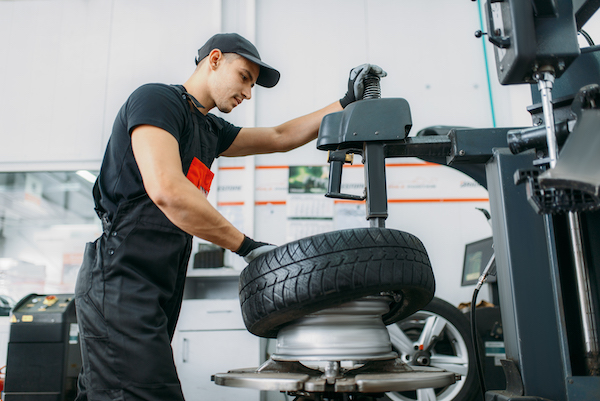Check Out Exclusive Mopar Tire Service Specials in Morris Today
Check Out Exclusive Mopar Tire Service Specials in Morris Today
Blog Article
Tire Service: Comprehending Tire Pressure Tracking Solutions
Comprehending Tire Stress Tracking Equipments (TPMS) is an important aspect of preserving optimum car efficiency and safety on the roadway. With improvements in automobile technology, TPMS has ended up being a basic feature in modern vehicles, giving real-time information on tire pressure levels.

Value of TPMS
The value of Tire Stress Monitoring Equipments (TPMS) depends on their capacity to enhance car safety and security and efficiency through real-time tracking of tire stress levels. Maintaining the right tire stress is important for ensuring ideal handling, stopping, and general safety and security of a vehicle. TPMS supplies vehicle drivers with immediate comments on any kind of underinflated or overinflated tires, enabling timely modifications to be made.
Elements of TPMS
Comprising various essential components, a Tire Pressure Tracking System (TPMS) functions as a sophisticated safety and security attribute in modern vehicles. The main elements of a TPMS consist of sensing units, a control component, and a caution indication. Sensors are generally situated in the tire shutoff stem or affixed to the wheel assembly, where they gauge tire pressure and transmit information to the control module. If it spots dramatically low stress in any of the tires, the control module procedures this details and sets off a caution. The warning indicator, usually a sign on the dashboard, signals the motorist to inspect the affected tire or tires. Some progressed TPMS versions likewise show the actual tire stress analyses for each and every tire, supplying chauffeurs with real-time information to ensure optimum tire efficiency and safety. By checking tire stress constantly, TPMS assists prevent mishaps, reduces tire wear, and enhances fuel efficiency, making it a critical element for automobile security and efficiency.
Sorts Of TPMS

On the other hand, indirect TPMS depends on the car's wheel speed sensors to check tire pressure. This system detects underinflation by comparing the rotational rates of the wheels. Indirect TPMS is less pricey than direct TPMS, as it makes use of existing sensing units within the visit the site vehicle.
While direct TPMS offers extra precise analyses, indirect TPMS is simpler in style and usually requires less upkeep. Both systems have their limitations and advantages, and the selection in between them often depends upon factors such as expense, lorry make, and personal preference. Understanding the differences in between these two kinds of TPMS can help car proprietors make educated decisions pertaining to tire maintenance and safety.
TPMS Upkeep Tips
Reliable upkeep of TPMS is vital for making certain optimal performance and security of your automobile. Routinely checking the TPMS sensing units for any kind of damage or corrosion is vital. Make certain that the sensing units are cost-free and tidy from debris that could hinder their performance. In addition, it is advisable to inspect the sensor batteries regularly and change them as needed to guarantee exact readings. Conduct routine look at the tire stress degrees and contrast them with the TPMS readings to ensure they are consistent. Rectify the system adhering to the manufacturer's guidelines if there are any inconsistencies. Moreover, throughout tire turning or substitute, make basics certain that the TPMS parts are handled very carefully to stop any type of possible damage. If the TPMS alerting light illuminates on the control panel, resolve the problem quickly by checking the tire pressures and the total system for any kind of faults. By adhering to these maintenance pointers, you can extend the lifespan of your TPMS and boost the security of your driving experience.
Benefits of Appropriate Tire Stress
Preserving correct tire stress, as emphasized in TPMS Maintenance Tips, is essential for enjoying the many benefits associated with optimum tire stress levels. In addition, appropriate tire pressure ensures also tire wear, prolonging the lifespan of the tires and advertising more secure driving problems. In final thought, the benefits of correct tire stress go beyond simply tire long life; they encompass improved gas effectiveness, enhanced safety and click to read security, much better car efficiency, and total driving comfort.
Conclusion
Finally, understanding tire stress surveillance systems (TPMS) is essential for keeping ideal tire stress and making sure car security. By identifying the relevance of TPMS, knowing with its components, recognizing the different kinds available, adhering to correct maintenance ideas, and realizing the benefits of keeping proper tire pressure, drivers can improve their driving experience and lengthen the lifespan of their tires. Appropriate tire stress is key to effective and secure vehicle operation.

Report this page